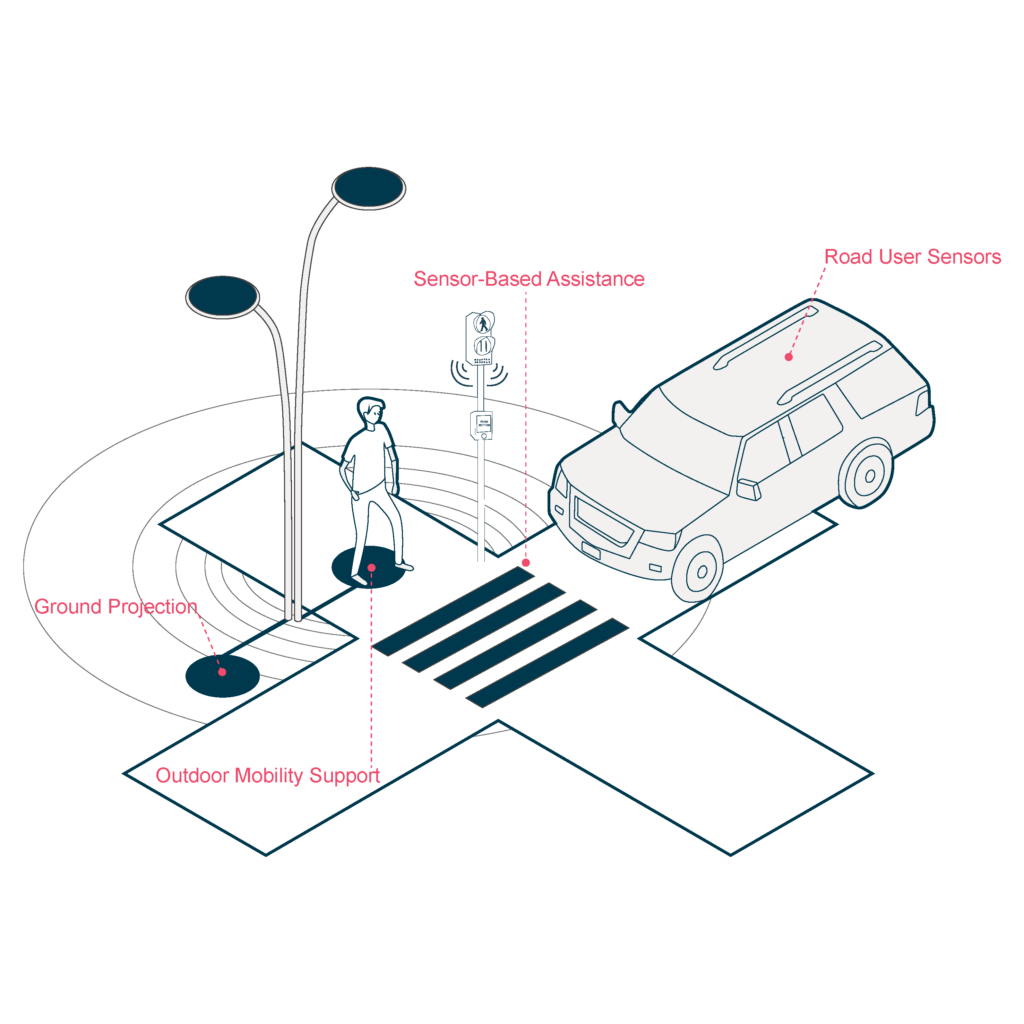Outdoor Assistive Technologies
Urban environments can be made safer and more accessible through sensor-based mobility assistance systems. These technologies detect obstacles, traffic, and pedestrians, providing real-time visual and auditory guidance to individuals with mobility and orientation challenges. Strategically placed at intersections, crossings, and transit hubs, they reduce accident risks and enhance independent movement. Regular calibration and maintenance ensure accurate and reliable operation in diverse settings.

- Place mobility assistance systems in key areas such as intersections, transit stops, and pedestrian crossings.
- Use both visual and auditory signals to provide real-time navigation assistance.
- Calibrate and maintain sensors regularly to ensure accurate detection of obstacles and hazards.
- Integrate sensors with accessible pedestrian signals for safer crossings.
- Ensure that assistance systems are designed for all users, including those with hearing and visual impairments.
Sources
- https://accessible-eu-centre.ec.europa.eu/content-corner/digital-library/en-172102021-accessibility-and-usability-built-environment-functional-requirements_en
- https://www.access-board.gov/adaag-1991-2002.html#2.%20GENERAL
- https://universaldesign.ie/built-environment/building-for-everyone/building-for-everyone-full-series
- https://www.codigotecnico.org/pdf/Documentos/SUA/DccSUA.pdf
- Carers
- Children
- Cognitive
- Cognitive abilities
- Decolonial perspective
- Digital
- Digital barrier
- Enviroment
- Environmental
- Gender and generations
- Gender perspective
- Hearing impairment
- Low-education
- Low-income
- Older people
- Other
- Physical abilities and features
- Sensory and Physical
- Socioeconomic
- Visual impairment